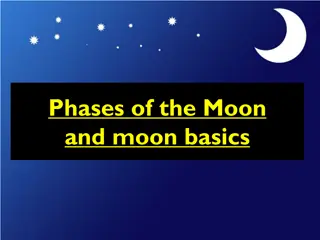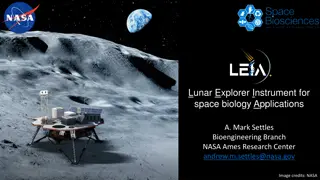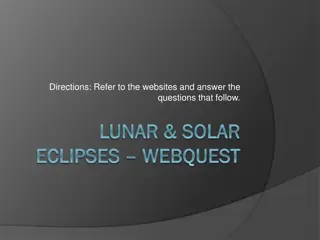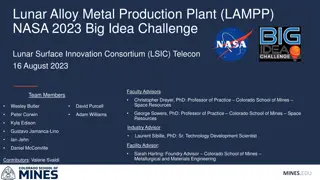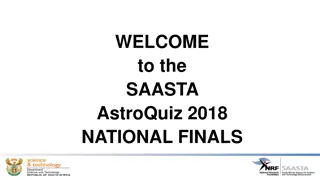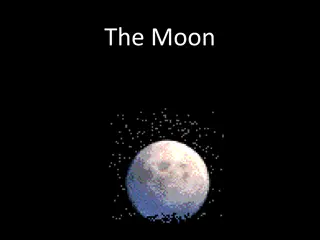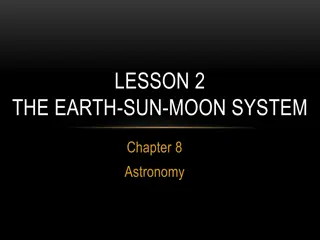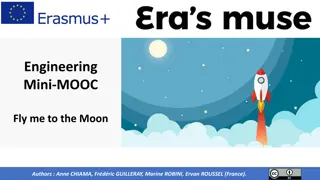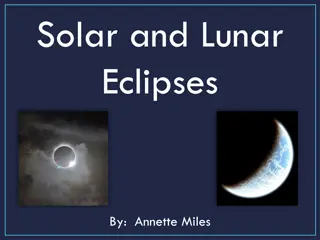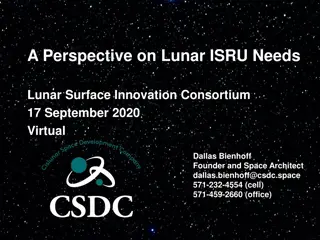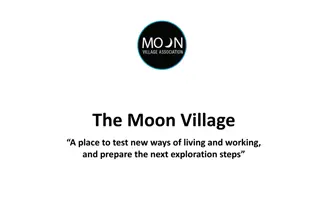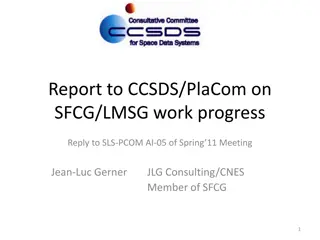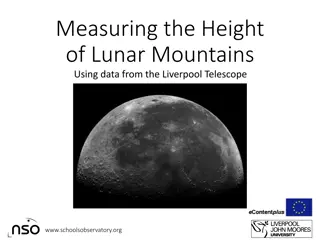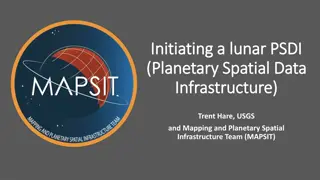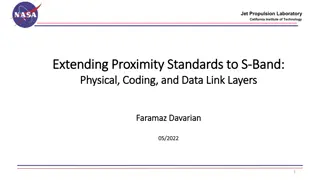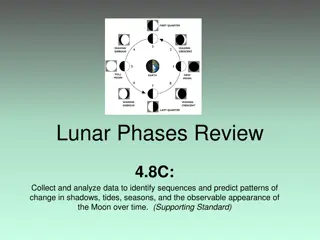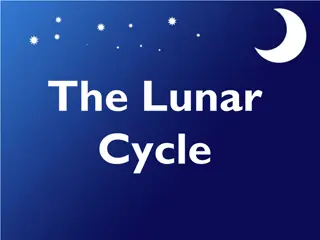Exploring Water on the Moon: Research Insights from Lunar Missions
Uncover the intriguing research on water presence on the Moon through the Lunar Reconnaissance Orbiter and the Lunar Exploration Neutron Detector. Discover how remote sensing and neutron detection technologies have shaped our understanding of lunar water distribution, challenging previous theories. Delve into the findings of the LEND Research Project from 2011-2012, offering new perspectives on the existence of water in the Moon's Permanently Shadowed Regions.
Download Presentation

Please find below an Image/Link to download the presentation.
The content on the website is provided AS IS for your information and personal use only. It may not be sold, licensed, or shared on other websites without obtaining consent from the author.If you encounter any issues during the download, it is possible that the publisher has removed the file from their server.
You are allowed to download the files provided on this website for personal or commercial use, subject to the condition that they are used lawfully. All files are the property of their respective owners.
The content on the website is provided AS IS for your information and personal use only. It may not be sold, licensed, or shared on other websites without obtaining consent from the author.
E N D
Presentation Transcript
Water on the Moon: Remote Sensing from the Lunar Reconnaissance Orbiter Michael Schaffner Dr. William Boynton, LPL Dr. Gerard Droege, LPL 19th Annual Arizona Space Grant Consortium Symposium University of Arizona April 21st, 2012
Water on the Moon: Remote Sensing from the Lunar Reconnaissance Orbiter Michael Schaffner Dr. William Boynton, LPL Dr. Gerard Droege, LPL 19th Annual Arizona Space Grant Consortium Symposium University of Arizona April 21st, 2012
Intro to research with the Lunar Exploration Neutron Detector (LEND) Galactic cosmic rays (GCRs) regularly strike lunar atoms, and their energy knocks neutrons loose Neutrons speeds are moderated best by similar- size hydrogen atoms LEND detects these slower (epithermal) neutrons
Intro to research with the Lunar Exploration Neutron Detector (LEND) Galactic cosmic rays (GCRs) regularly strike lunar atoms, and their energy knocks neutrons loose Neutrons speeds are moderated best by similar- size hydrogen atoms LEND detects these slower (epithermal) neutrons
Intro to research with the Lunar Exploration Neutron Detector (LEND) Galactic cosmic rays (GCRs) regularly strike lunar atoms, and their energy knocks neutrons loose Neutrons speeds are moderated best by similar- size hydrogen atoms LEND detects these slower (epithermal) neutrons
An introduction to LEND research, continued The LEND instrument records the number of neutrons detected each second, along with latitude, longitude, altitude, angle, and more. Using these data, scientists have mapped the surface of the moon to visually depict regions that deviate from the normal neutron counts.
LEND Research Project 2011-2012 It had been previously theorized that lunar water would be found in the form of ice in Permanently Shadowed Regions (PSRs). LEND maps disagree: South Pole PSRs
LEND Research Project 2011-2012 Hypothesis: Variations in neutron flux are caused by thermal variations from the solar insolation and lack of lunar atmosphere. Test: Average LEND data by time of lunar day to determine whether temperature variations affect the flux of thermal neutrons.
LEND Research Project 2011-2012 Original maps used only latitude and longitude, working with ~1,000 squares to capture data:
LEND Research Project 2011-2012 How to capture time of lunar day (28 Earth days) in addition to squares? Bin each longitude region: Days 1, 8, 15 Days 2, 9, 16 Days 3, 10, 17 Days 4, 11, 18
LEND Research Project 2011-2012 My colleague Jerry and I created: 9 latitude bands 24 longitude bands Roughly 40 time bins per lat/lon square With 3,000 to 6,000 data points per lat/lon/time bin.
LEND Research Project 2011-2012 Q: Do we see the expected dependence on temperature of thermal neutrons detected? To answer this, we plot thermal neutron counts for each lunar hour: 13.65 Thermal Neutrons, Lat -30 to 30 13.6 13.55 13.5 13.45 13.4 13.35 0 5 10 15 20 25 Hour of Lunar Day
LEND Research Project 2011-2012 Q: Do we see the expected dependence on temperature of thermal neutrons detected? A: Yes. And something else. 13.65 Thermal Neutrons, Lat -30 to 30 13.6 13.55 13.5 13.45 13.4 13.35 0 5 10 15 20 25 Hour of Lunar Day
Conclusion Temperature variations do play some part in thermal neutron flux from the lunar surface.
Conclusion Temperature variations do play some part in thermal neutron flux from the lunar surface. ( And also: Hydrogen s behavior on the lunar surface is still not well understood.
Conclusion Temperature variations do play some part in thermal neutron flux from the lunar surface. ( And also: Hydrogen s behavior on the lunar surface is still not well understood. LEND data is very useful for detecting potential hydrogen deposits on the moon.
Conclusion Temperature variations do play some part in thermal neutron flux from the lunar surface. ( And also: Hydrogen s behavior on the lunar surface is still not well understood. LEND data is very useful for detecting potential hydrogen deposits on the moon. The NASA Space Grant program is awesome. )
Acknowledgements Special thanks to my advisor, Dr. Boynton, for his encouragement and mentorship; and to Dr. Jerry Droege, my daily mentor/co-coder. I am also indebted to Susan Brew & Space Grant for an absolutely transformational experience this year! Feedback: maschaff@email.arizona.edu
What is the Lunar Exploration Neutron Detector? One of six instruments on NASA s Lunar Reconnaissance Orbiter (LRO) spacecraft Launched in 2009 with an est. cost of $600 million. LEND was developed in cooperation with the Russian Space Research Insitute (IKI).
LEND Research Project 2011-2012 These bins make it relatively easy to study other significant questions, such as: Q. Does the earth s magnetosphere shield the moon from GCRs? We can now compare data from full moon time bins with data in time bins outside the full moons.
LEND Research Project 2011-2012 Q: Does the earth s magnetosphere shield the moon from GCRs? A: Our results, essentially No , are consistent with established theories and of primary interest to lunar and cosmic ray scientists.
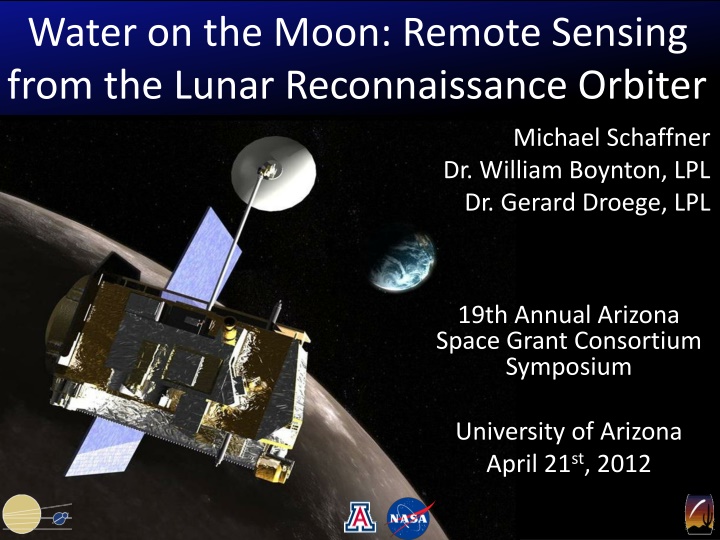


![get⚡[PDF]❤ Building Habitats on the Moon: Engineering Approaches to Lunar Settle](/thumb/21624/get-pdf-building-habitats-on-the-moon-engineering-approaches-to-lunar-settle.jpg)

